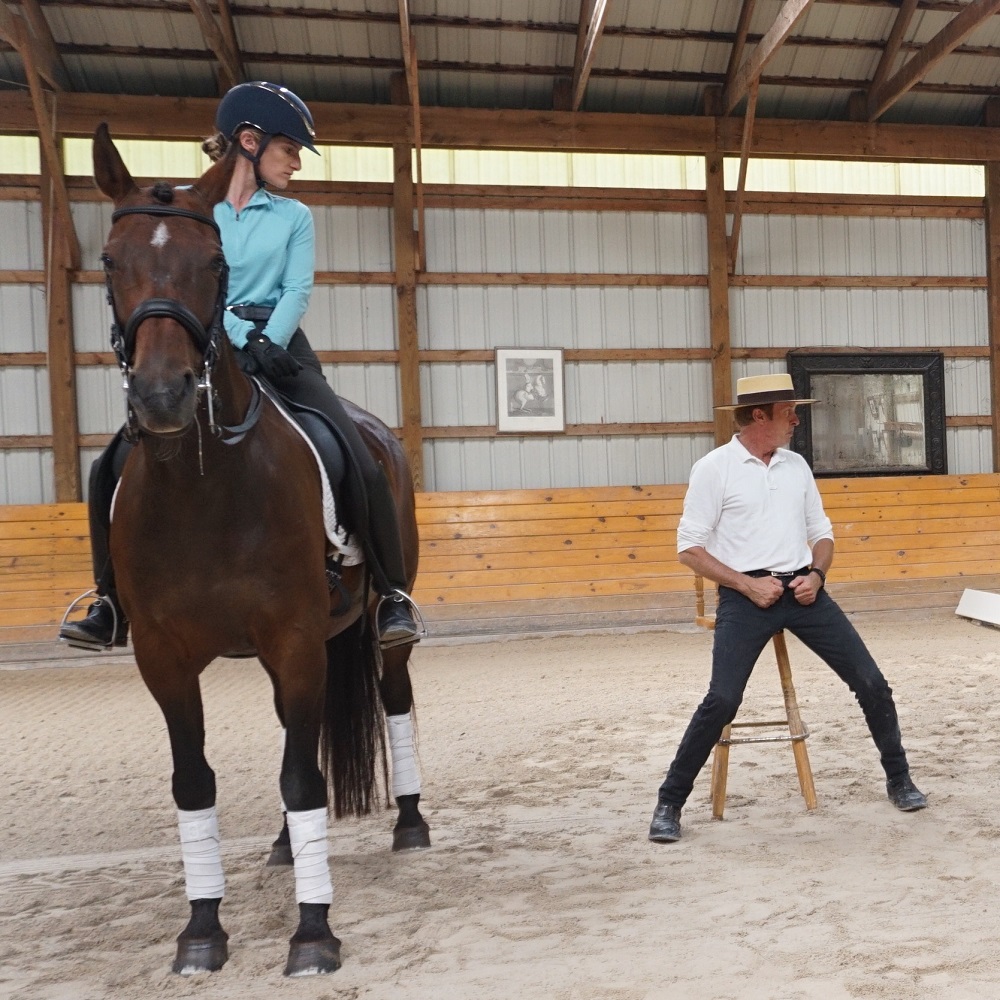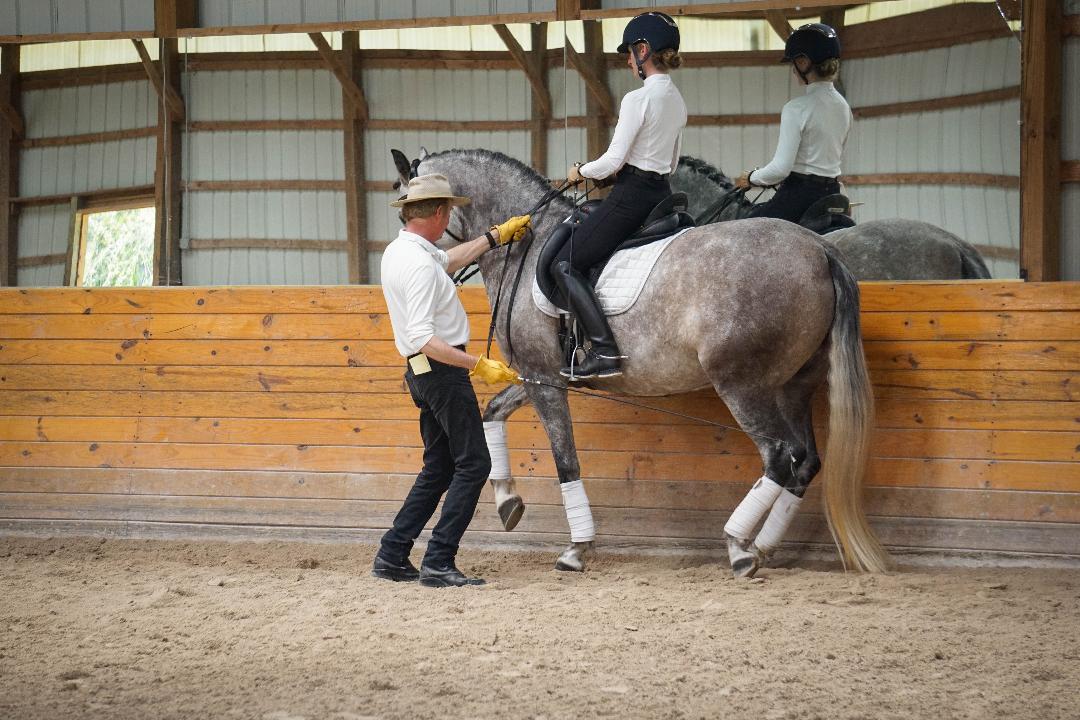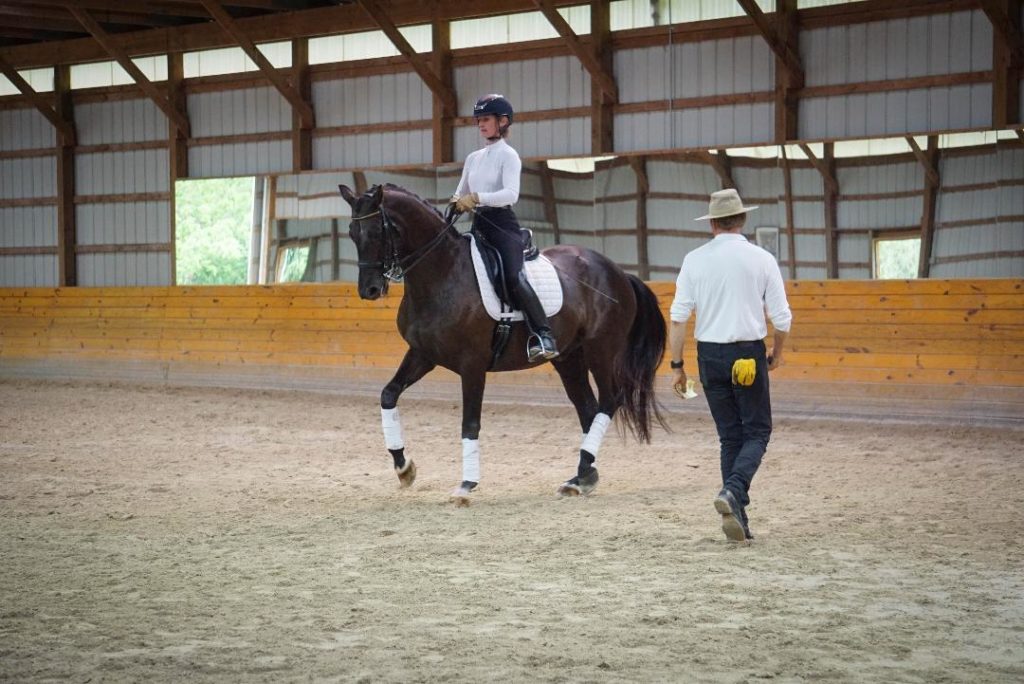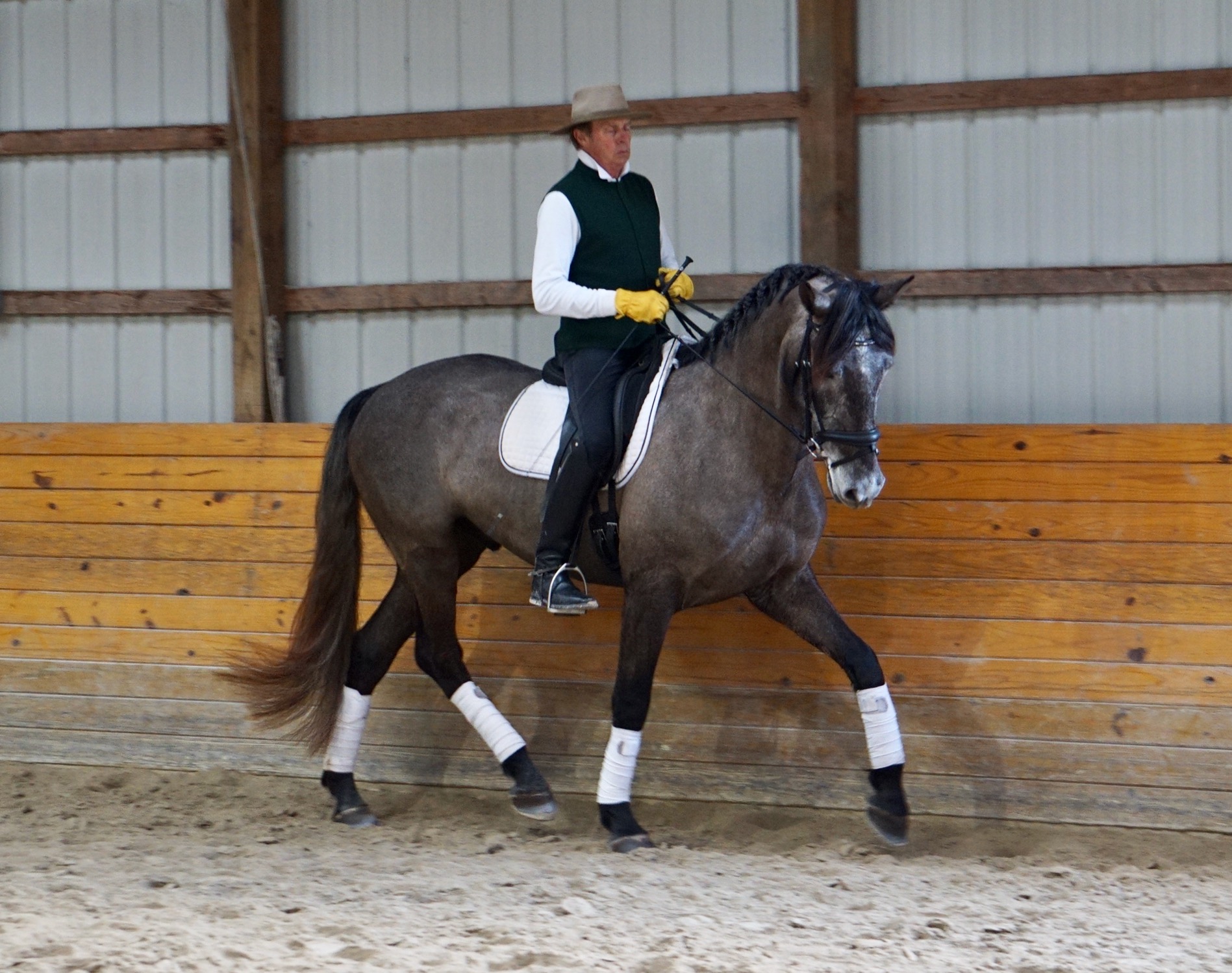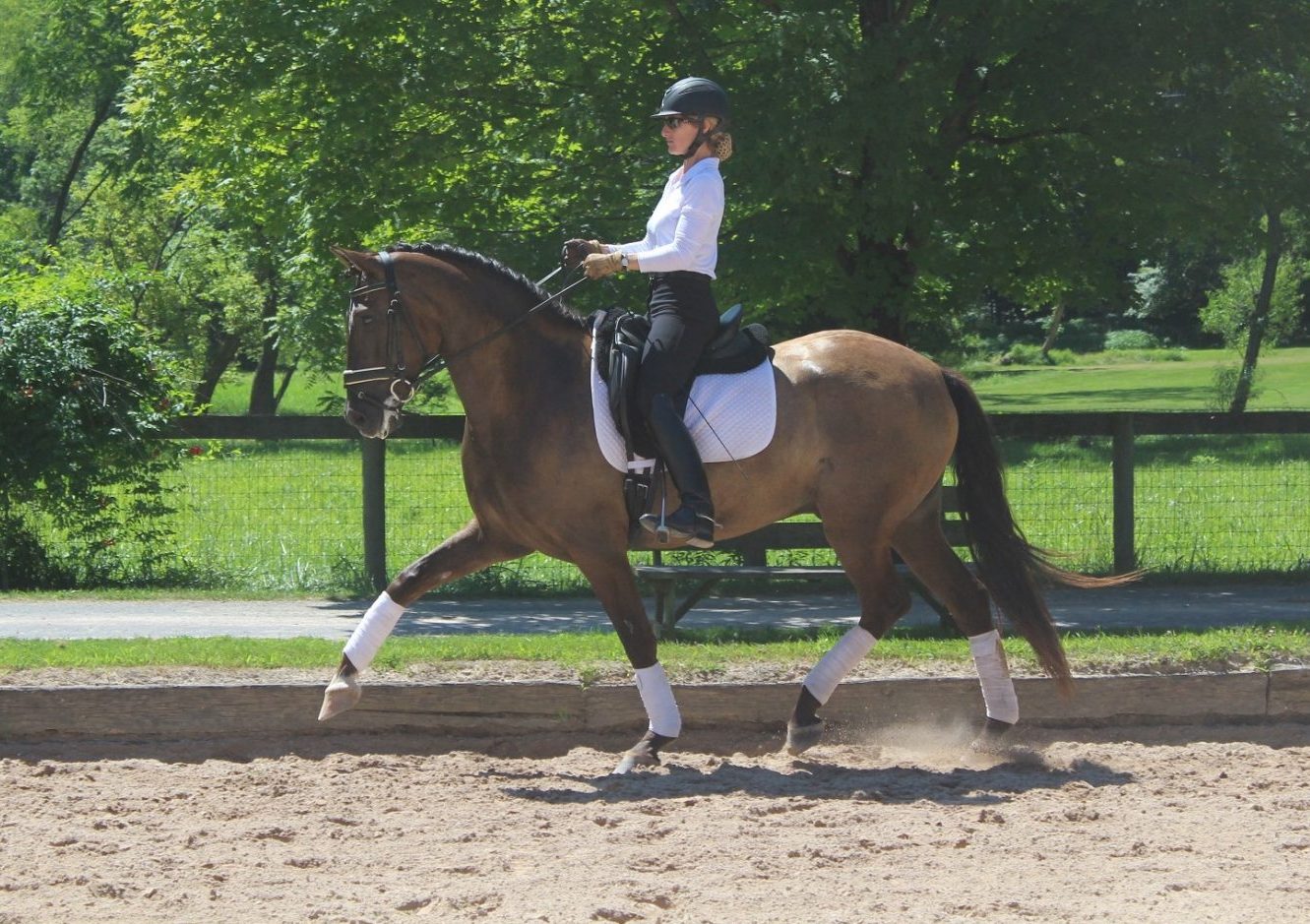- All
- Andalusian
- Announcements
- Articles
- Blog
- Books
- Clinics
- Dressage
- History
- Horse Magazine
- Horses
- Internship
- Lectures
- Lessons
- Lost Hollow Farm
- Merchandise
- Podcasts
- Reviews
- Sales
- Training
- Wisdom
New Poster Available for Sale! The History of Classical Dressage and Classical Training Scale
On a single page, Paul Belasik has presented a beautiful, frameable poster that should hang in every dressage stable. It is a synopsis of dressage history from the Renaissance to modernity. The genealogy of five centuries of different national schools is a telescope into the past, and illuminates some of the outstanding contributors to classical dressage around the world.Riding Academy Resuming Lessons and Clinics in May
Students and friends, as Pennsylvania approaches our 'yellow zone,' lightening restrictions from Covid 19, the Riding Academy will be resuming lessons and clinics.New Article: Notes on Piaffe
Judging from my mailbox, dressage riders seemed perplexed about how competition judges are currently evaluating some horses’ piaffes at the international level. What is high quality and what is faulty? In this article, I will address two major faults in piaffes of popular riders that have appeared in recent performances, and seem to be confusing viewers.Equestrian Magazine Equine America Features Dressage for No Country
We are pleased to announce that Equine America magazine is publishing an excerpt of Paul's book, Dressage for No Country, in its winter issue.Announcement: 2020 Lecture Demonstration Series Dates
Following the popularity of last year's lecture/demonstrations here at the farm, we are pleased to announce our 2020 series of dates and topics.Recap and Video Clips of Longeing and Work in-Hand Lecture/Demo

To recap our last lecture/demo of the season, we have a special treat of some brief video clips! Paul gave a lecture on the history of longeing, followed by an explanation of our equipment with a live horse model and discussion of other methods and equipment.
Recap: Rider Position Lecture/Demo
Our latest lecture/demonstration event at Lost Hollow Farm was an in-depth, practical look at effective use of correct rider position.
“Modern Study of Expertise” from “Dressage for No Country”
From "Dressage for No Country:" The Road to Mastery and The Modern Study of Expertise.
I have noticed a nagging weakness that shows up in a lot of riders. They have an aversion to studying theory.
For Sale – Andalusian/Hanoverian IALHA Mare Caposalda
Caposalda is a 15.3 hand 2011 registered Half Andalusian (IALHA). "Cappy" is a comfortable, responsive mare with easy lateral work and extensions. Schooling flying changes (see video.) Lovely gaits and potential to go much farther.
The essence of the halt – few judges understand what it is
In every dressage competition test, at every level, in every country, the horse and rider will start and finish the test with a halt. The beginning of the test may read, “A: Enter working trot. X: Halt, Salute. Proceed collected trot.”
Review of demo lecture on Developing a Successful Practice
Our second lecture demonstration of the year, Developing a Successful Practice, was a comprehensive overview of principles for both the rider and the horse.
Review of Musical Freestyles Demo: Expression and Design
The weather could not have been better. There was bright sun, a light breeze, and 72 degrees for our first lecture demo of the year.
New 2019 Lecture/Demo Series At Lost Hollow Farm
281 Lost Hollow Road Dillsburg, PA
The Pennsylvania Riding Academy is pleased to announce a new lecture and demonstration series for 2019. Paul Belasik will conduct six sessions, once per month April through September.Paul’s New Book: “Dressage for No Country”
He spent a lifetime studying and traveled the world in search of "true" dressage. This is what he found.
Musical Freestyle: Your Horse is Not a Large Drum
This is the second part of a two part blog. The first was about music in the daily existence of a dressage stable.
Asymmetry and Soundness: Analysis and Selling Horses
In an article recently published by the Royal Veterinary College, University of London, a question is framed in bold type: “Should we redefine equine lameness in the era of quantitative gait analysis?” The article begins, “An international team of researchers, including [some] from the Royal Veterinary College (RVC) in London, have strongly advised on the need to discriminate clearly between “asymmetry” and “lameness” when assessing a horse’s gait.”Teaching, Criticism and Self Esteem
“Sticks and stones will break my bones, but words will never hurt me.”
– Children’s rhyme.
Podcast Lectures and Interviews with Paul Belasik
 We have selected a few of Paul's past lectures from old recordings to share with you that illuminate Paul's extensive research, knowledge and philosophy of riding horses. In many cases, these podcasts have been converted from tape recordings, so we ask for the listener's patience if the quality suffers at moments.
We have selected a few of Paul's past lectures from old recordings to share with you that illuminate Paul's extensive research, knowledge and philosophy of riding horses. In many cases, these podcasts have been converted from tape recordings, so we ask for the listener's patience if the quality suffers at moments.







